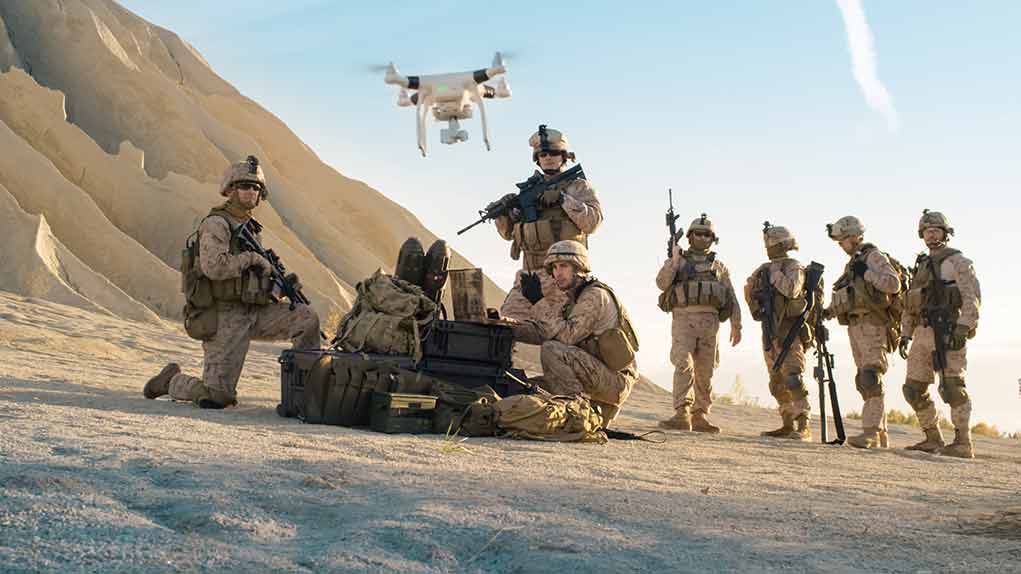
U.S. homeland defense faces an imminent drone threat crisis that military experts warn could only be addressed after a major attack occurs on American soil, potentially causing devastating damage to critical infrastructure and casualties.
Key Takeaways
- Ukraine’s recent successful drone strikes against Russian military bases destroyed 41 aircraft and exposed critical vulnerabilities that also exist in U.S. defense systems
- Military experts warn it’s not a technological gap but policy limitations that prevent effective drone defense on U.S. soil
- Intelligence suggests up to 3,000 potential hostile agents already in America could execute drone attacks against critical infrastructure or public gatherings
- Both China and domestic extremists pose serious drone attack threats that current defense postures are unprepared to counter
- Experts urge immediate policy changes before a catastrophic drone attack forces reactive measures
Ukraine’s Drone Success Exposes American Vulnerabilities
Ukraine’s spectacular drone offensive against Russian airfields has exposed alarming gaps in American homeland defense capabilities. In what military analysts are calling a textbook example of asymmetric warfare, Ukrainian forces successfully targeted multiple Russian airbases, destroying or damaging 41 aircraft including strategic bombers. This precision attack, executed with relatively inexpensive technology, demonstrated how drone warfare has fundamentally transformed modern conflict and highlighted serious vulnerabilities in America’s domestic protection systems that President Trump’s administration must urgently address.
The operation showcased Ukraine’s growing prowess in drone warfare after sustained investment in this technology. “An absolutely brilliant result, a result achieved solely by Ukraine. One year, six months, and nine days from the start of planning to effective execution,” said Volodymyr Zelenskyy, Ukrainian President. highlighting the strategic importance of the attack.
Policy Gaps, Not Technology, Leave America Vulnerable
Military experts warn that America’s vulnerability to similar drone attacks stems primarily from policy limitations rather than technological deficiencies. Colonel Seth Krummrich, a former Special Forces officer with extensive counter-terrorism experience, emphasized this critical distinction: “Interestingly, it is not a technological gap, it is a policy/authority process to engage and deny drone attacks. I assess it will take a major drone strike in the U.S. to change policy.”
This policy gap means civilian operations often lack the necessary authority to intercept hostile drones, creating dangerous vulnerabilities across American infrastructure. The adaptability of drone technology compounds this problem – inexpensive commercial drones can be easily modified for malicious purposes by both state and non-state actors. Even trained military snipers struggle to intercept fast-moving drones, which can reach speeds of 35 mph while carrying explosive payloads or surveillance equipment targeting sensitive American assets.
Multiple Threat Actors Eyeing American Targets
Intelligence experts have identified numerous potential adversaries who could exploit America’s drone defense vulnerabilities. China, which has already penetrated American airspace with spy balloons, could deploy sophisticated drone systems against military installations or critical infrastructure. North Korean and Iranian actors pose additional state-level threats, while domestic extremists represent a growing concern for homeland security officials tasked with protecting American citizens from aerial threats that current systems are ill-equipped to counter.
“If a similar drone-based attack were launched on U.S. soil, it would be extremely difficult to intercept once set forth in motion, much like the events of 9/11,” said David Grange, warned General. highlighting the catastrophic potential of coordinated drone attacks on American targets.
The Atlantic region serves as alarming wake-up calls that the threat is not theoretical but immediate and pressing.
America Must Shift to Proactive Defense Posture
National security experts stress that America must immediately transition from a reactive to proactive defense posture against drone threats. The Ukrainian conflict has demonstrated how drones now dominate modern battlefields, with one Ukrainian soldier grimly noting, “The future is soldiers hiding in holes underground while the drones fight it out above them.”
“Solving this challenge will require an all-hands-on-deck approach: federal, state, and local governments must work hand-in-hand with private industry, research institutions, and technology developers to close the gaps in our homeland defense posture,” said General David Grange, underscoring the need for comprehensive solutions to this evolving threat.
The current policy framework surrounding drone defense was created before these technologies became widely available and weaponized. Without immediate updates to these policies, American cities, critical infrastructure, and military assets remain vulnerable to attacks that could cause significant damage while requiring minimal resources from our adversaries. President Trump’s administration faces an urgent challenge to modernize drone defense policies before America experiences firsthand the devastating capabilities that Ukraine has just demonstrated against Russian forces.

















